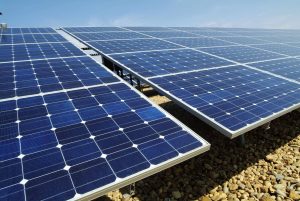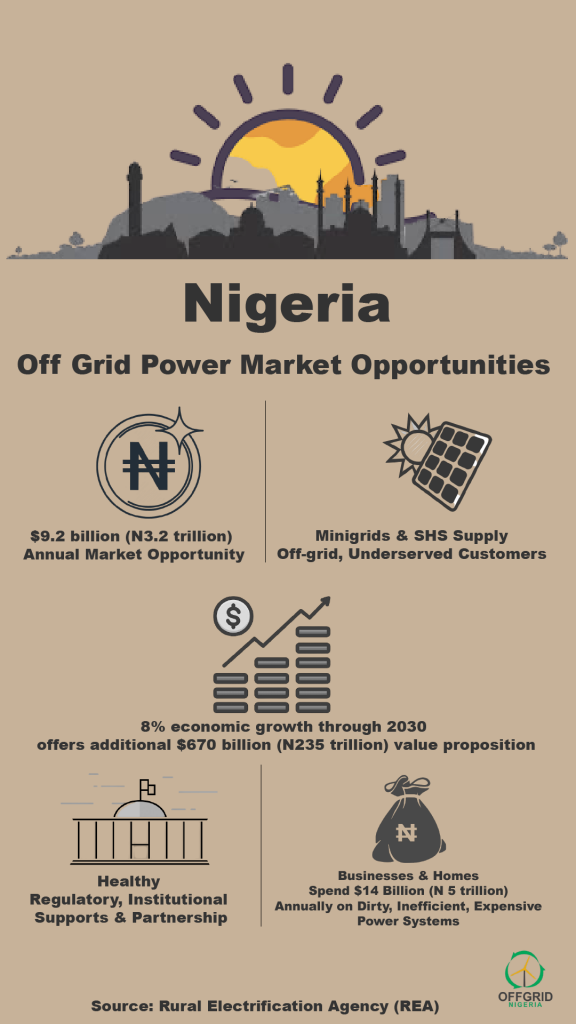Nigeria’s Rural Electrification Agency (REA) has released more details on how it would spend about $350 million financial facility expected from the World Bank to develop off grid electricity supply systems in the country under the Nigerian Electrification Project (NEP).
A document obtained from the agency indicated the fund would be disbursed in four parts – $150 million for hybrid solar systems to improve the economies of rural communities in the country; $75 million for standalone solar systems for rural homes, farms, and enterprises; $105 million for power systems to electrify public universities and teaching hospitals; and $20 million to provide technical assistance to the budding market.
The project is a $350 million facility from the World Bank to the Nigerian government for off grid development, and the implementing agency is the REA.
“This project has four components: component 1 – Solar Hybrid Mini Grids for Rural Economic Development – US$150m. Component 2 – Standalone Solar Systems for Homes, Farms and Enterprises – US$ 75m. Component 3 – Power systems for public universities and teaching hospitals – US$105m. Component 4 – Technical assistance – US$20m,” said the document.
Also, the NEP hopes to increase electricity access to households and Micro, Small and Medium Enterprises (MSMEs), students and patients at federal universities and university teaching hospitals throughout Nigeria.
Accordingly, the REA has been working with the World Bank team to develop a robust project that when implemented will be the largest off grid electrification project in West Africa.
The NEP is equally expected to be a data-driven off grid electricity market model that could be copied by other countries in Sub Saharan Africa. It would utilize the fund from the World Bank to scale up rapid implementation of off grid power solutions across Nigeria and contribute to Nigeria’s fulfilment of the Sustainable Development Goal 7 (SDG7) amongst other global development protocols.
With it also, Nigeria could increase gender inclusion in her power sector; improve the offerings of her agriculture; provide reliable power supply for 250,000 SMEs and one million households; ensure uninterrupted power supply in public universities and teaching hospitals; as well as keep her within her climate change obligations under the Paris Agreement.
Spending scenarios
Further into the spending plans, the REA explained it would in the solar mini grids component, spend $70 million in competitive bidding for portfolios of mini grid sites and $80 million connecting new customers with mini grids built to grid code standard. This would amount to $150 million.
It stated it expected the first-mover potential from this to manifest within the next five years when 300,000 households and 30,000 SMEs would be served by 1000 mini grids.
For the standalone solar home systems expected to gulp $75 million, the document indicated that $15 million would be deployed as ‘accelerator’ grants to high-potential importer-distributors; while $60 million will go to output-based grants and business model.
It noted the first-mover potential from this in the next five years would be 1.5 million households and micro-enterprises.
37 federal universities and seven affiliated hospitals would benefit from the $105 million mapped for university and hospital power systems. There would be EPC contracts for constructing power systems, in addition to Operations and Maintenance (O&M) contracts for 10 years. The power systems are however designed to operate independently from the national grid.
For the $20 million earmarked for technical assistance, the document stated that it would fund institutional support for the REA; investment pipeline development; financing needs assessment; regulatory support; pre-investment support to mini grid developers; ecosystem development for SHS; and environmental and social safeguards.
Adopted timelines
According to it, the World Bank in the second quarter of 2018 approved the NEP, while the NEP procurement process for mini grids and stand-alone systems would commence by the last quarter of 2018.
Deployment of the mini grids and stand-alone systems would however commence in the first quarter of 2019 with 250 mini grids and 500,000 stand-alone systems first deployed within this period.
The project would however be reviewed afterwards to identify the successes and challenges of implementing the strategy adopted.





